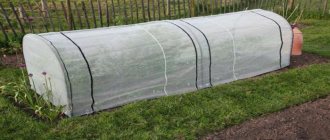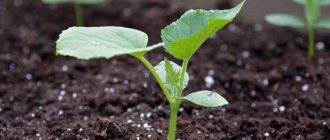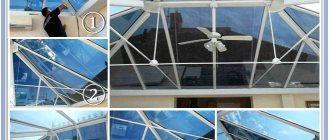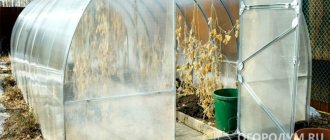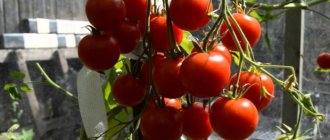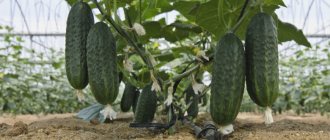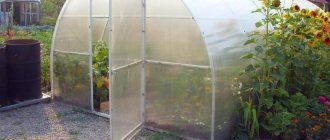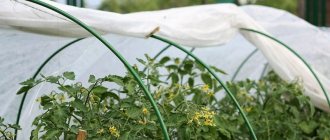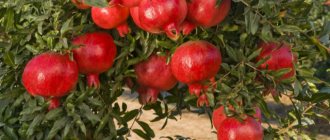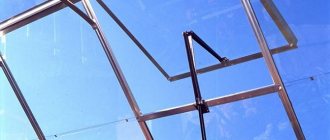Experienced summer residents share recommendations on choosing the right material.
It has long been proven that plants protected from adverse factors develop faster. If the owners of a suburban area want to get a large harvest of berries, vegetables, and herbs several weeks earlier, they need to use special covering materials.
Our readers ask how to select and use such materials.
Mouse1 FORUMHOUSE user
Please tell me if you have ever used (I don’t know what it’s called correctly) material to protect against weeds. Is it true that it allows water and sunlight to pass through? The family has a small child and time is running out, it’s a pity to start strawberries.
There are a lot of similar questions. We studied this topic and decided to share advice from experienced gardeners and summer residents on the correct choice of covering materials.
Purpose
Protective materials are used to shelter plants from adverse external influences. Innovative technologies are used in their production.
This allows you to get good results when growing garden crops:
- Increase productivity.
- Accelerate the process of fruit ripening.
- Protect plants from possible frosts in the spring.
- Reduce the amount of time required to cultivate beds.
- Reduce soil moisture loss.
The soil, covered with special films, does not overheat and does not dry out. There is no need to weed the beds often. You can cover the plants completely. In this case, a frame is created on which agrofibre is stretched, or the beds are simply covered with canvas. The edges are sprinkled with earth to ensure reliable fixation.
An important function of shelter is mulching. The soil can be protected from rapid loss of moisture and the development of weeds. Cover the beds with film, making holes in appropriate places. Seeds or seedlings are planted in them.
For which crops can agrotextiles be used?
Strawberry
The most popular method of application. Perhaps it was with strawberries that the victorious march of geotextiles through flower beds and vegetable gardens began. Read more about application on strawberries>>>
Strawberries in agrotextiles
Tomatoes, eggplants, peppers (in the greenhouse and in the ground)
Seedlings are planted in holes in geotextiles laid out in advance. The roots of greenhouse crops develop well under it: they are closed, they are not damaged during weeding and are not washed away by watering. In addition, this is only for 1 season, which means pests do not have time to set up their homes there. Well, except for ants, they are the scourge of agrotextile workers.
Rose garden
Agrotextiles are most often used in rose gardens if they are used as a monoflower or in combination with tree crops and large perennials. In this case, the fabric is laid out, covering all the empty space between the bushes. On top….mulching.
Roses in a flower garden with agro-fabric
Flower garden with coniferous and ornamental shrubs
The same application as in the rose garden.
Application in different periods
In the spring, covering protects plants from frost, acting as insulation. Vegetables and greens develop faster as the soil and air under the film become warmer.
During the warm period, the soil can overheat and quickly lose moisture. The film will protect plants from drought, heavy rain with hail, and gusty winds. Non-woven agrofibre will protect the crop from pests. Watering and loosening the soil will need to be done less frequently.
In autumn, the film will protect plants planted in the ground at the end of summer. This is important for remontant varieties of berries, herbs and some vegetables.
Films are also used in winter. They are used to create shelter especially for heat-loving crops. They will not be afraid of frost, lack of snow on the ground surface, or strong winds. Experienced gardeners cover strawberries, onions, grapes, young trees and shrubs, and some types of perennial flowers.
Acrylic film cost
An example of a finished acrylic greenhouse. The color of acrylic is determined by ultraviolet radiation, which affects plant growth.
Acrylic for greenhouses and hotbeds is usually sold in 10-meter rolls, each 3.20 m wide. However, its price depends on the thickness of the film. So, for example, with an indicator of 30, its cost can be about 180 rubles. And if its thickness is 60, then 360 rubles. The creation of temporary greenhouses, the construction of which uses the named material and metal pipes, will cost 1,300 rubles. Moreover, such a greenhouse can be built every season for 3-4 years.
Currently, there are ready-made solutions on sale that are created in production and then sold in various construction stores. So, for example, you can purchase a 6-meter greenhouse, which is covered with acrylic. The latter is mounted on special support pins. The design is quite stable and lasts for a long time. It is easy to assemble and disassemble. It costs about 1000 rubles. Such a greenhouse can be a good alternative to a DIY greenhouse.
Varieties
All covering materials are made from polymers under high pressure and temperature. They differ in density, structure and additional properties. All subspecies can be divided into two large groups:
- Polyethylene film. It can be transparent or cloudy. Films are used to cover the frame under which tomatoes, strawberries, and peppers are grown. Onions and garlic, as well as root vegetables, grow well under such cover.
- Non-woven agrofibre. This type of shelter is also called agrofabric or spunbond. The polymer is not only melted, but also passed through dies. The result is continuous threads or fibers. They are fastened into a fabric with impregnation or stitched with a needle. These are soft and lightweight types of shelters. They can be laid directly on plants without a frame. Shrubs are wrapped in non-woven materials for the winter and used for mulching the soil.
It is important to know the advantages and disadvantages of the presented shelters.
Agrofibre or film: which is more profitable?
Most farmers and amateur gardeners continue to use black plastic film to control weeds the old fashioned way. However, it is more profitable to use mulching agrofibre, since this material:
- perfectly passes water, so watering can be organized by overhead irrigation;
- allows you to easily apply water-soluble fertilizers, which, passing through the canvas, are completely absorbed by plants;
- under the agrofibre, which allows air to pass through, mold and rot do not form, which cannot be said about plastic film;
- does not create a favorable environment for the development of pathogenic microbes that inhibit the root system of plants;
- protects the soil from drying out, due to which the top layer of soil does not compact and, therefore, does not need to be loosened;
- prevents the growth of weeds between rows, reducing labor costs.
Most modern mulching materials are designed to last for several seasons. For example, mulch covering material against weeds from AgroLux can be on the site from a year to three or more years.
When growing strawberries or wild strawberries, this is beneficial, since after a certain period of time the plantings need to be updated. At this moment, the covering material also changes, because the resource of the old canvas is completely exhausted. The service life of the covering fabric depends on the presence of a UV stabilizer in its composition, which protects the non-woven material from the destructive effects of ultraviolet radiation.
Mulching the soil with black non-woven materials allows you to grow tomatoes in your garden plot without much hassle or physical effort
Advantages and disadvantages of film
Summer residents often use films in their gardens. This group of shelters is characterized by the following advantages:
- Protects from frost and frost.
- Excellent light transmission.
- They are inexpensive, so they are used over large areas.
- Do not release heat from the shelter.
The disadvantages of polyethylene films are:
- Can only be used on arches. The material is quite heavy, so you cannot lay it directly on the plants.
- They do not allow water to pass through. Watering plants requires more effort and time.
- The beds are periodically ventilated so that the temperature does not rise to a critical level. Otherwise, the plants will die.
- Strong winds wear out the film on the edges of the frame.
- Condensation accumulates on internal surfaces, which can cause diseases on plants.
- The films sag under the weight of sediment.
- The service life does not exceed one season.
What is agrofabric, spunbond, black lutrasil?
In our case, we are talking about black agrofabric; green or red agrofabric is less common.
Black agrofabric :
- dense 90, 100, 120 and 130 g/sq.m,
- allows water and air to pass through,
- does not decompose in the soil,
- resistant to chemicals.
Black spunbond density 60 g/sq.m is thinner than agrofabric and cheaper. Has UV protection (SUF marking). Unlike denser agrofabric, you cannot walk on it unless you want to turn the soil underneath into stone! In addition, spunbond deteriorates from frost.
Agrofabric in a flower garden with shrubs and conifers
Black lutrasil or agrofiber with a density of 50-60 g/sq.m is used in the same way as spunbond for mulching. It is less durable than spunbond and even less durable than dense agrofabric.
Spandbond and lutrasil are similar to each other and are used almost identically.
If you want to cover large areas, but want to save money, then put black agrofabric on the paths, and spunbond or lutrasil under the bushes.
Advantages and disadvantages of agrofibre
Agrofabric is characterized by a wide range of applications. It has a number of positive qualities:
- Durability. When used correctly, agrofabric does not lose its original qualities for 5-6 years.
- The fiber weighs little. It will not break the stems of even tender seedlings.
- Two pieces can be sewn by increasing the width of the fabric.
- It allows moisture and air to pass through, which prevents water from stagnating and condensation forming.
- When mulching, it prevents weeds from growing in the beds.
- Watering is carried out without removing the material. This greatly simplifies the care of garden crops.
Agrofabric has much fewer disadvantages. These include the following:
- The cost is higher than that of film. But given the service life, agrofibre is cheaper.
- When sewing the edges, it will not be possible to achieve uniformity of the fabrics.
Non-woven covers are used in the cultivation of almost all garden plants. When choosing a suitable canvas, a number of parameters are taken into account.
Reviews
- Igor: “I have a greenhouse on a foundation with supporting arches every 0.5 m, covered with 4 mm thick cellular polycarbonate, and it has been standing for four years now. We grow vegetables for ourselves from April to October; onions and parsley are available until the New Year. I installed the end profiles, no algae appeared in the honeycombs, the light still transmits well. When I was building it, I doubted that maybe I needed to use thicker material. But I wanted to save money. I don't regret it yet. Our winters are not very cold (rarely when it gets down to -20) and have little snow. The material has not changed, I think it will serve for a long time.”
- Sergey: “Our greenhouse has a “combined” covering: a reinforced film is stretched on the sides (we don’t remove it for the winter, it’s been withstood for three years already), and on top is simple PE 120 (I buy it new every year). So far everything is fine!”
- Larisa: “We bought an advertised polycarbonate greenhouse. We installed it ourselves. We've been using it seasonally for three years now. In the summer, I open the window and door for ventilation, otherwise I’m afraid that everything will burn. Plants can easily withstand frosts down to -5. If you make a greenhouse yourself, buying polycarbonate sheets, you can save money.”
Maybe
Density
Our regular reader Egenii asks: “The soil is heavy plasticine black soil. It was virgin land last year, now it has partially rotted over the winter, turned over with a plow, and plowed several times with a walk-behind tractor. Actually, the question arose of how to plant so that weeds do not attack the plants. Krasnodar region, it’s hot at times...if you take a thick covering 60 and mulch with straw, will it do any good or will the plants die?”
One of the important parameters of agrofibre and film is their density. Based on this criterion, the following groups of paintings are distinguished:
- 14-17 g/m². Used for direct placement on plants. Low density makes the canvas light. As they grow, the shoots are raised and covered. Agrofabric and film with this density are used in low beds. The edges must be weighted so that the flooring does not blow off the wind.
- 20-42 g/m². This is a universal, most common type of film, agrofabric. It is used in the construction of greenhouses on steel arches or rods. Vegetable seedlings and flowers develop well under such shelter. The density is high enough to withstand wind and rain.
- 43-60 g/m². This is a cover for full-fledged greenhouses used throughout the entire gardening season. The harvest is protected from birds, spring frosts, and overheating in summer. Winter crops are covered with thick canvases. The material of this group is suitable for heat-loving plants.
- Over 60 g/m². These are the densest and heaviest films. They are used for mulching beds. Dense varieties create a greenhouse effect on the ground. The soil warms up faster and becomes suitable for planting a couple of weeks earlier. Shoots pass through the holes. To do this, cross-shaped or round slits are made in the canvas.
Disadvantages of using agrotextiles
1. Slugs, ants, beetle larvae (chafer beetle larvae), mole crickets and even mice can “take shelter” under agrotextiles. The most harmless of the guests are lizards, the most dangerous are vipers.
Mice love to live where agrotextiles are laid out and a layer of mulch lies: warmth and a lot of food around
2. If you do not mulch the agrotextile on top, then by the end of the season the soil underneath may become compacted and you will get the opposite effect to what you dream of. So if you are laying agrotextiles for a long time, it is better to cover it with a layer of mulch on top. This is especially important if you use spunbond and its analogues with a density of no more than 60 g/sq.m.
3. If the weeds do sprout, they will lift the fabric upward. As a rule, the problem occurs if you have laid thin and cheaper material. When using dense covering material, this happens extremely rarely.
Color
Participant kler26 writes the following: “Has anyone used black agrofibre to cover the ground in garden beds to prevent weeds? I had some trouble with him. Maybe I'm doing it wrong. I only water each hole; the water washes away the soil, leaving bare roots. That's why I add soil regularly. The weed also grows under the fiber. you have to stick your hand in and somehow pull them out - it’s very inconvenient. In addition, the fiber periodically pokes out from under the ground, so you have to crawl and cover it with new ones. I thought it would be easier with him, but something turns out to be more troublesome.”
The canvases differ in color, which is also chosen in accordance with the area of application. They are suitable for the following purposes:
- Black. Used in cold regions. They attract sunlight, so the soil warms up faster. Even before planting the plants, the beds are lined with material. After 1-1.5 weeks, the soil becomes suitable for sowing.
- White. Reflects light, preventing weeds from developing. Slots are made in the canvas for plants. Shoots located above the material receive more light.
- Black and white. The canvases are white on one side and black on the other. They are spread directly onto the beds. The black side faces down. This prevents grass from growing. The white side reflects the sun's rays, preventing overheating of the soil and plants. The material is used for vegetable gardens in warm climates. You will need to water and weed the beds less often.
- Green. It is used for near-trunk decoration and for mulching the soil. Creates a beautiful landscape near the house and prevents the germination of weeds.
How to use covering material?
Mulching agrofibre refers to non-woven polypropylene materials that do not cause any harm to cultivated plants, animals or people. At the same time, agrofibre does not give any chance to weeds, which die from the lack of light, trying to break through the dense material. The density of mulching covering materials is 50-60 grams per square meter.
Scheme for using non-woven weed covering material. Cultivated plants are planted in holes made with a sharp peg. Weeds die because they don't have access to sunlight.
The method of application is as follows:
- black agrofibre is spread on the soil that has dried out after winter and prepared for planting, to prevent weeds from sprouting over the entire area of the bed;
- seedlings are planted in cross-shaped slits made in the covering fabric with a sharp peg or cutting object.
The video shows how to use non-woven covering material using the example of growing strawberries:
Recent Entries
Lilac perennials that are beautiful, compact and do not crowd out other plants Why when buying seedlings you should not take the sellers’ word for it and how to determine the age of the plant using 3 signs Tomato seedlings have turned purple or whitish: why the color has changed and how to save the plants
Other Important Features
Covering materials differ in some other features. The width of the canvas is 1.5-3.2 m. It is not recommended to connect the strips. This degrades the performance of the shelter. Therefore, it is necessary to select a roll whose width corresponds to the size of the bed. Its edges should protrude 10 cm beyond the treated area. They are sprinkled with soil or pressed down with logs.
Some films and agrofabrics have reinforcement. This is a rigid lattice mesh that increases the service life of the material. It prevents the fabric from quickly rubbing, which is especially important when stretching it onto the frame. Reinforced fabrics are used in regions where strong winds blow.
The covering material may have an ultraviolet stabilizer. Such varieties are marked “SUF”. If the amount of sunlight in the region is insufficient for the growth of certain types of crops, this variety is used. The film converts light into infrared rays, which affect the sprouts longer and more gently. Even in the evening, crops receive sufficient light.
Shelf life of acrylic film
As a rule, this type of film lasts from one to three years. It can be damaged by strong gusts of wind, as well as poor-quality greenhouse or greenhouse frames. In this case, it should be replaced with a new one. If you compare it with glass, then it loses to it in terms of preservation time. The same thing is observed if we consider two-layer cellular polycarbonate for greenhouses. The latter lasts at least five years, which is two years longer than in the case of the material described in this publication. Hot sun, frequent showers and hail can destroy the structure of the film, which is why it will have to be renewed. In mild climates and gentle winds, one canvas is usually enough for three seasons.
Black agrofibre
Its use is aimed at combating the emergence of weeds. This is a mulching material that is most often used for growing strawberries and wild strawberries. To do this, you need to spread a canvas on the ground, then cut holes in it for future planting of seedlings. The holes are made in a cross shape, and under them there are holes. This material can be used to cover tree trunk areas to ensure good heating of the root system and retain moisture.
Also, by spreading it between the rows, there will be no need to weed these areas. If you leave the trees covered for the winter, it will help retain heat and protect the roots from frost. Savings on watering using agrofibre are very noticeable for the gardener; moreover, the soil covered with spunbond is protected from compaction and mold. The crop on such a covering does not come into direct contact with the ground and remains clean, at the same time safe from rotting. Such material can be used on the site all year round and does not require removal for the winter. In addition, complete environmental friendliness will not spoil the crop with emissions.
Advantages and disadvantages
Before making a choice, you need to consider the pros and cons of black covering material. A number of gardeners believe that it is better than white and more reliably copes with the tasks.
The canvas can protect plantings from exposure to unfavorable environments. They are not affected by direct sunlight and precipitation. It also eliminates moisture and nutritional deficiencies. The natural microclimate does not allow pathogenic bacteria to take root; in addition, ideal conditions for growth are created. The seedlings are very easy to care for, fertilize or water them.
It is noted that black covering material is universal. It can be used when organizing greenhouses and greenhouses, for arranging paths or stretching over a bed.
Black film is most often used for the mulching procedure. The product is highly appreciated for its affordable price. Reinforced canvases are popular in landscape design. Weeds practically do not grow under the black film.
However, this product may also have disadvantages. A number of them are associated with improper installation of the product or non-compliance with operating rules. In this case, significant harm can be caused to seedlings, since errors lead to the appearance of condensation, and this can lead to problems such as fungus, and in some cases, plant death.
In addition, black products are subject to strong heat. Since air passage is difficult, this can lead to the formation of rot. To make the negative features less pronounced, gardeners recommend sprinkling the material with straw. In hot areas, you will need to cover the plantings with newspapers or grass. Ultraviolet stabilizers are destroyed after 2 months of use.
Off-season storage of agrofibre
If the material is not intended for wintering on the site, it should be carefully removed from the plants. Proper storage will provide the canvas with maximum service life, so before sending it for the winter, it is necessary to properly clean the material. If washing is required, then after this you need to dry the fiber well, and then fold it and store it in a dark and dry place. Consult specialists on the website https://harvest-center.com.ua
If conditions are not favorable, the material may lose its properties, for example, if moisture and soil enter, rotting may occur.
If such material is placed on plants, they will die or, at best, get sick. In contact with
Material advantages
Spunbond perfectly protects seedlings from wind and scorching sun rays and creates a favorable microclimate in a greenhouse or mini-greenhouse. Thanks to microscopic holes, this material allows drops of water to pass inside and also allows excess moisture to evaporate. Thus, plants under spunbond never get steamed, as sometimes happens in film shelters on hot days, the leaves breathe freely and do not burn in the sun. A large selection of agrofibre is presented on the website https://harvest-center.com.ua
You can water the seedlings directly over the cover without removing it or removing it only from time to time. But don’t forget: seedlings grow quickly, and along with the seedlings, weeds grow just as quickly. So don't miss the moment!
Covering with non-woven materials promotes faster ripening of vegetables and berries, and also protects garden crops from adverse weather conditions - heat, acid rain and hail. Under such protection, the soil temperature is always several degrees higher than in the open.
Most often, agrofibre is used to obtain an early harvest of strawberries and potatoes, while the ripening time of the crop is accelerated to 15-20 days. For this purpose, a white, medium-density covering material is used.
Lightweight white spunbond helps protect vegetables from sunburn on hot days. Peppers and tomatoes are the most vulnerable to the sun, so they need to be protected first. It is not necessary to place arches or any other supports over the bed; it is enough to secure the covering material along the edges so that it does not blow away in the wind.
Lumitex – protection against negative ultraviolet rays
This material is capable of transmitting blue and red rays of the ultraviolet spectrum. Moreover, Lumitex also converts green rays into blue, which enhances the flow of active radiation, reflecting and retaining that part of the radiation that is harmful to plants.
Lumitex differs not only in its properties from other materials, but also in its appearance: it is soft, ribbed, and pinkish in color. Most often used to protect strawberry and cucumber beds, which ensures harvesting 12-15 days earlier. In addition, the yield increases by 35-45%. Lumitex is often used with polyethylene film. To do this, the walls of greenhouses are covered with lumitex, and the roof is covered with film. A linear meter of Lumitex costs from 90 rubles.
There are many varieties of covering material, which differ not only in appearance, but also in density, properties and the material itself (film or fabric)

